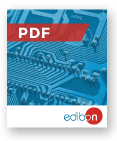
NEW Energy leaflet
With our complete Energy area, EDIBON gives answer to the academic demand for teaching and learning concepts of Energy, in an easy and practical way.
DownloadEnergy is a natural resource extracted and transformed for a specific use in order to meet the services and goods production needs of the society. Regarding the primary energy sources, there are renewable energies and non-renewable energies.
View moreRenewable energies are those that come from inexhaustible sources or sources with regeneration capacity. Noteworthy renewable energies are: photovoltaic solar energy, solar thermal energy, wind power, marine energy, geothermal energy and biofuels.
Non-renewable or conventional energies are those that come from limited sources found in nature and, generally, cause a great environmental impact. The most common are fossil fuels such as coal, oil and natural gas. And, on the other hand, nuclear power obtained from nuclear fission and fusion.
Power plants are necessary to obtain electricity from these primary energy sources. Some examples are coal-fired power plants, combined cycle power plants, nuclear power plants, solar thermal power plants, photovoltaic power plants, hydroelectric power plants, wind power plants, etc.
Nowadays, non-renewable energies are increasingly scarce goods that, together with global warming, make the concept of energy efficiency more and more important. Increasingly advanced technological solutions are studied in order to obtain maximum efficiency in power generation, in the electric power systems to transport it, as well as in the energy consumption control and management. Technology and energy efficiency go hand in hand. An example is the growing expansion of smart grids. They cover from power generation with renewable energies and the power transmission and distribution systems to the management of energy consumption through smart metering systems, such as smart meters.
View Products5.1.- SMART GRIDS AND POWER SYSTEMS
5.2.- MICROGRIDS
5.3.- RENEWABLE ENERGIES
5.4.- CONVENTIONAL ENERGIES
5.5.- ENERGY STORAGE
5.6.- HIGH VOLTAGE AND ELECTRICAL PROTECTION SYSTEMS
5.7.- INSTALLATIONS AND MAINTENANCE